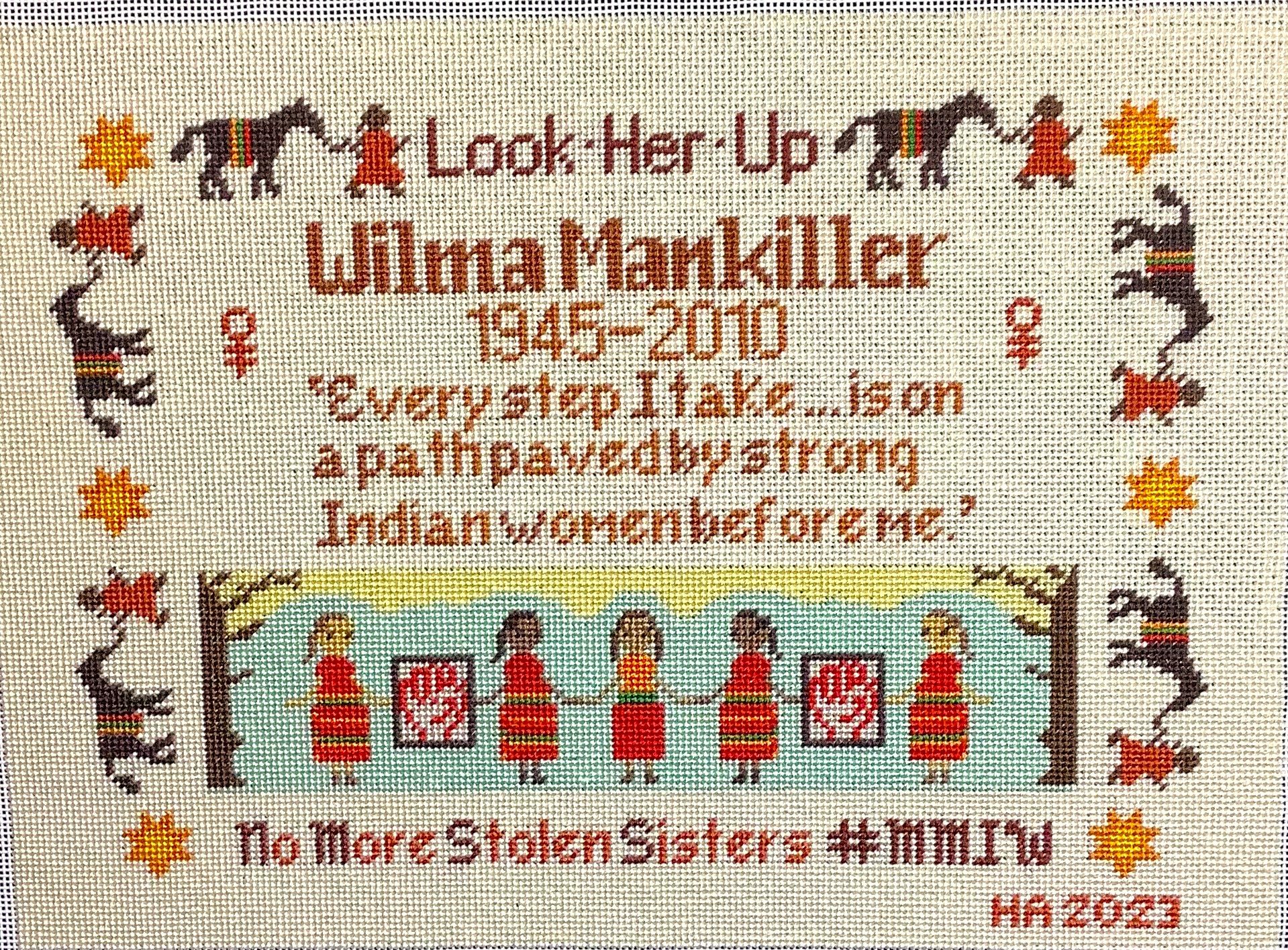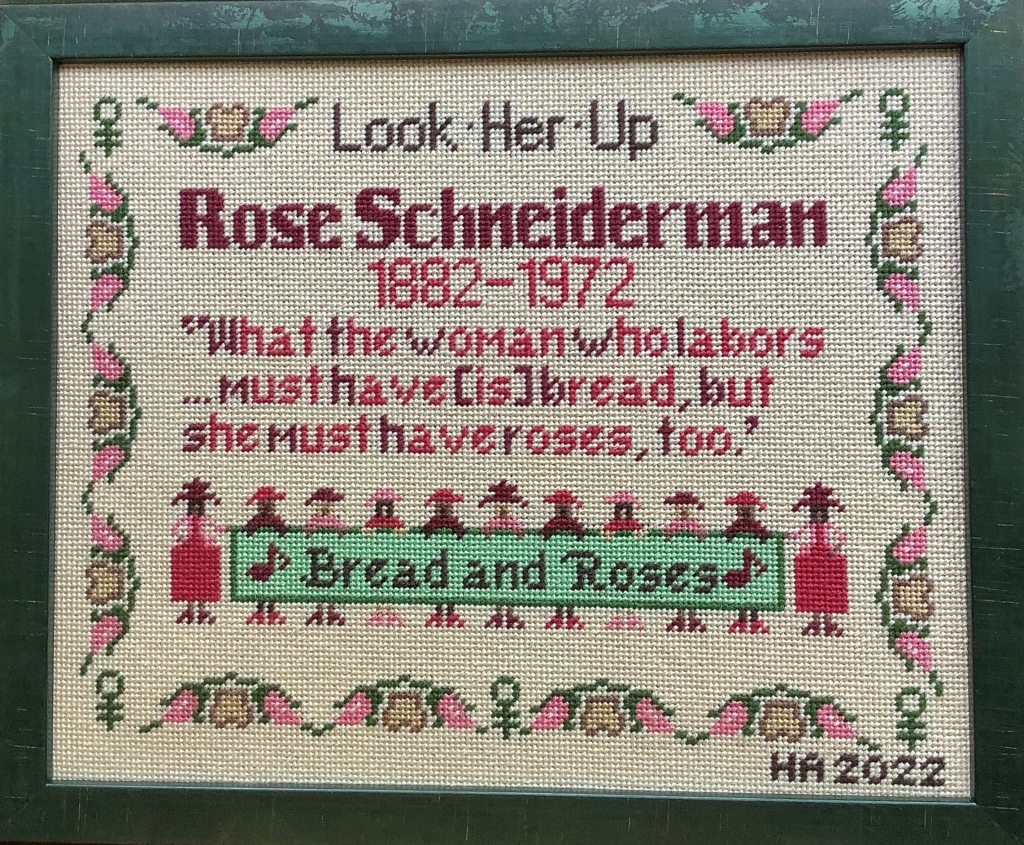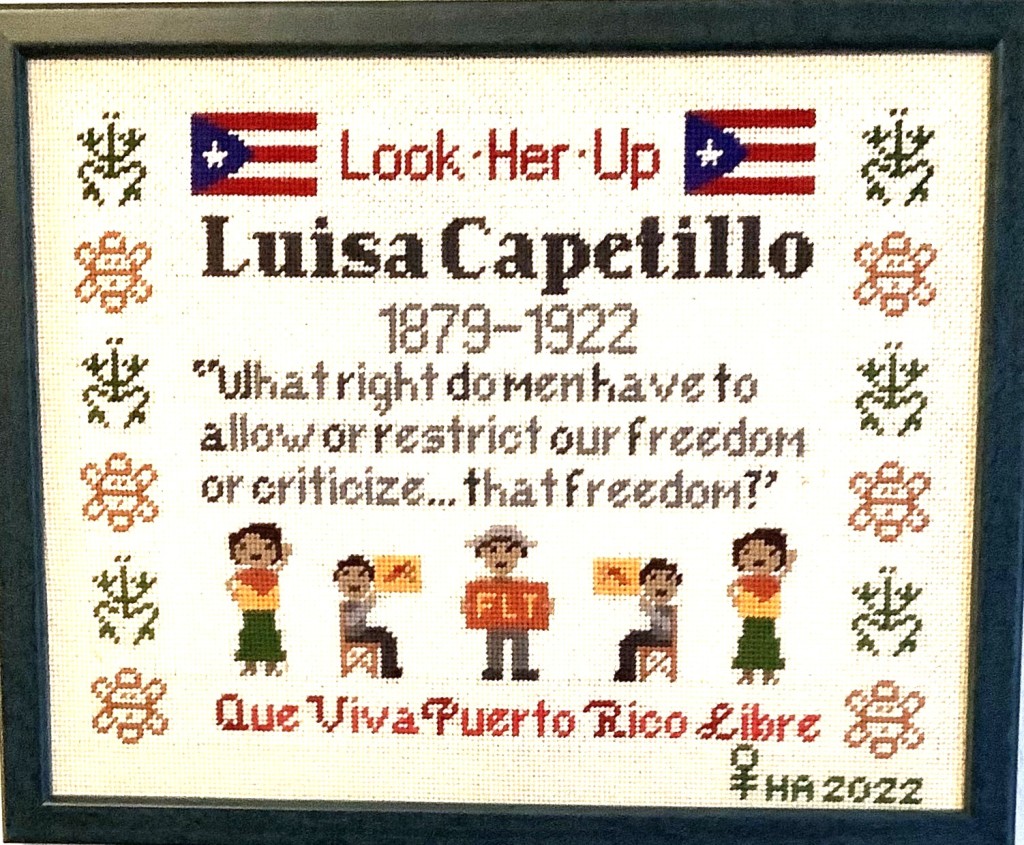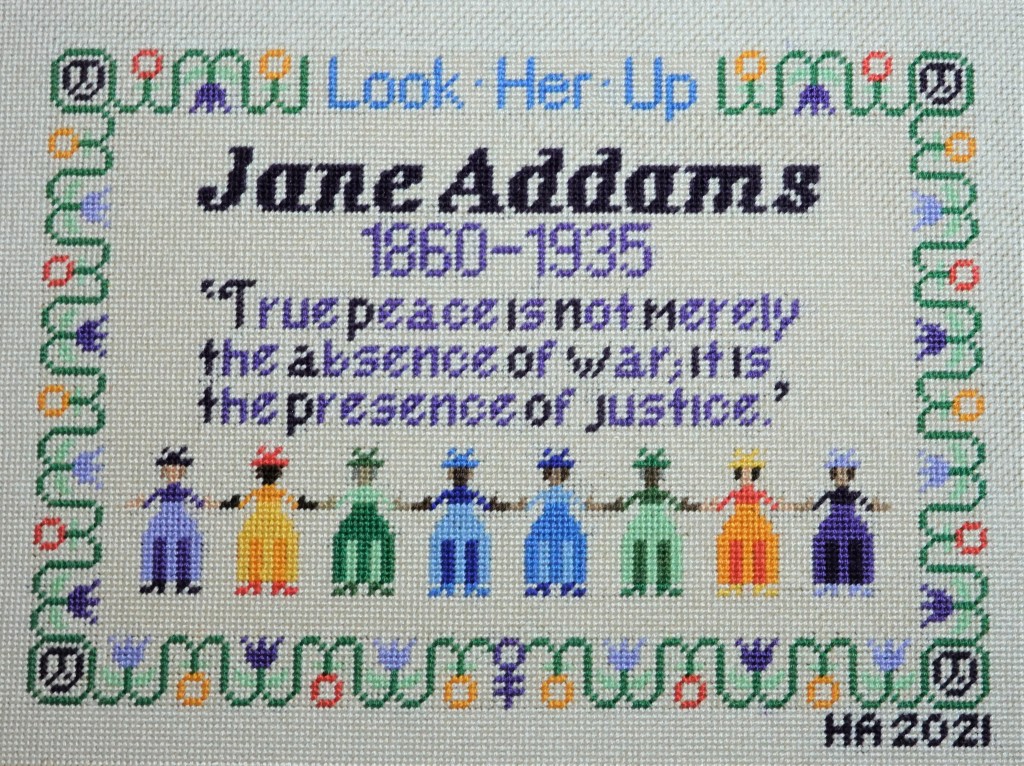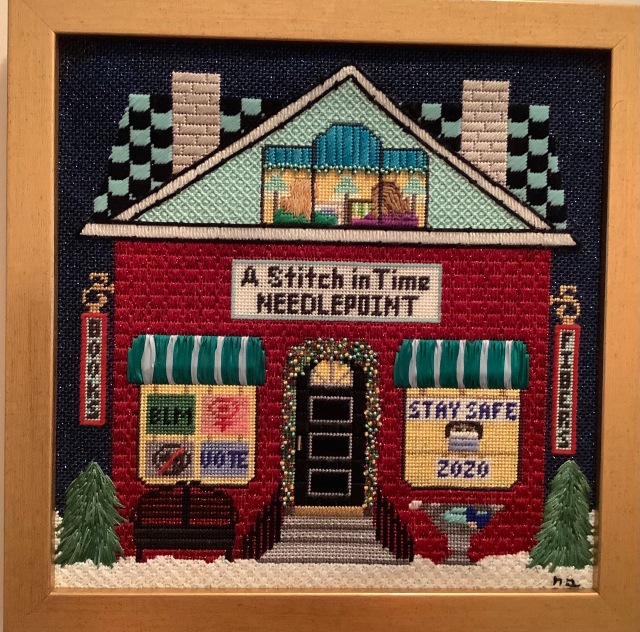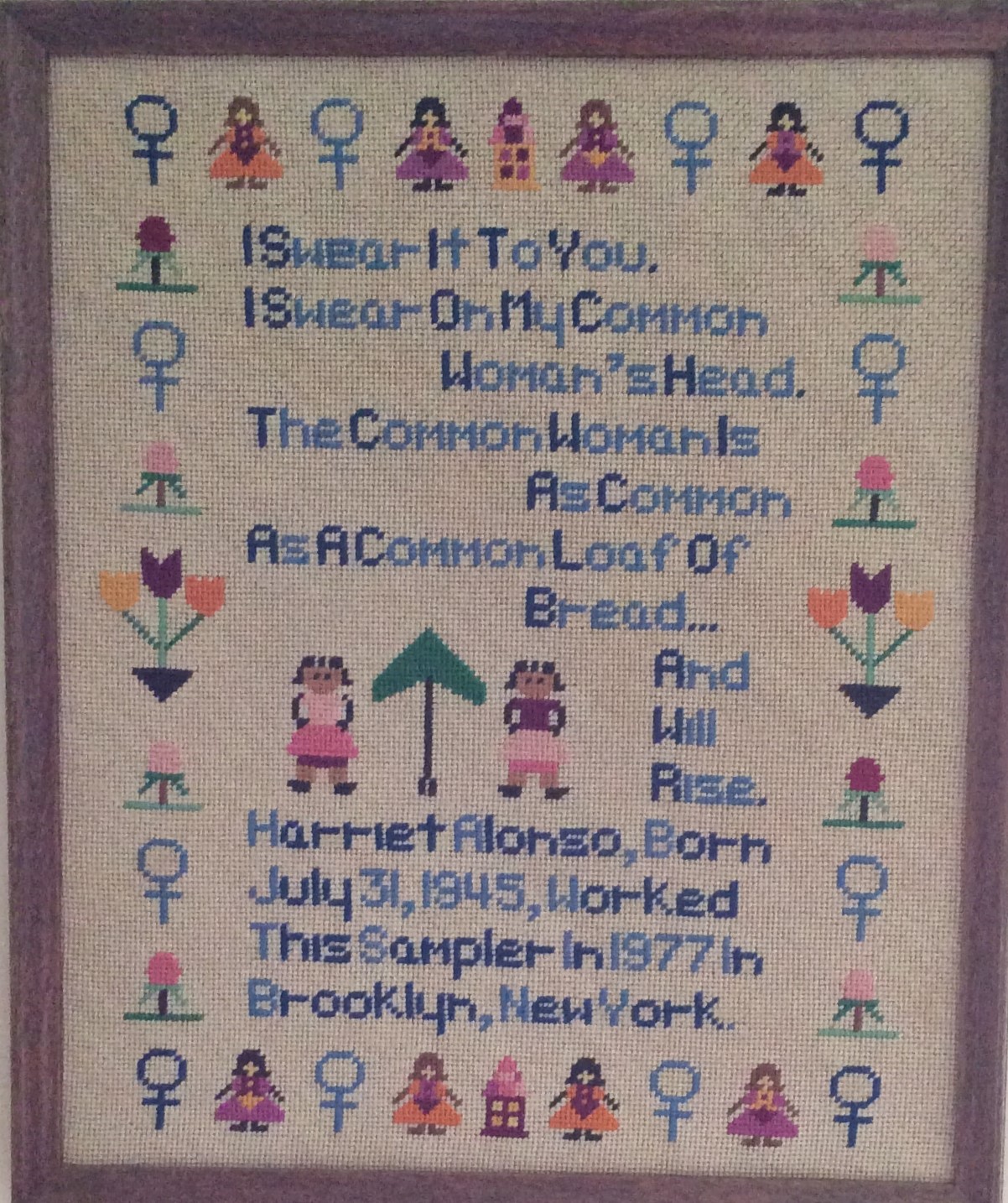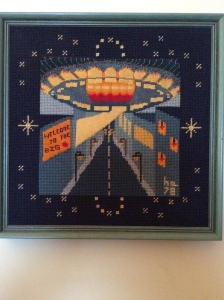2020 is a huge year for those of us who live in the U.S. Not only is it the year for a presidential election but it is also the year we celebrate the 100th anniversary of the 19th amendment to the Constitution giving women the right to vote. In honor of both occasions, this women’s historian and embroiderer offers to you her latest “political poster” in her “Stitcherhood is Powerful” collection.
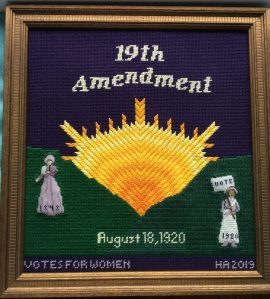
Designed and stitched by Harriet Alonso
For all you embroiderers out there, “Votes for Women” is a canvas embroidery (needlepoint) piece measuring about 9 x 10 inches. The ground fabric is 18 mesh canvas with two suffragists worked on Lugana 28 mesh appliqued onto the canvas, giving a three-dimensional effect. I used mostly silk threads from Planet Earth, Splendor, Kreinik and Pepper Pot supplemented with Rainbow Gallery’s silk lame and Very Velvet. The stitches include basketweave, slanted Gobelin, four-way bargello, and mosaic. The colors are those from the suffrage campaign—yellow, purple, and white for the U.S. and gold, purple, and green for our sisters in the U.K. The two figures in the piece were adapted from copyright-free images in Clip Art. I chose to use the August 18, 1920, date for the design as that is the date of ratification of the amendment and the date that appears in the Constitution. Many folks celebrate August 26 as the day when the final document was signed, making women’s vote the law of the land.
My design was adapted from a 1915 crepe-paper banner created, unfortunately, by “anonymous” (Please sign your work!) and sponsored by the Empire State Campaign Committee (New York) as included in Jennifer A. Lemak and Ashley Hopkins-Benton’s book, Votes for Women: Celebrating New York’s Suffrage Centennial (SUNY Press, 2017). The original banner belongs to the estate of the Elizabeth Cady Stanton Family.

I am very pleased (and proud) to share with you the news that the embroidery received two awards at the 2019 Exhibit at the annual American Needlepoint Guild’s Seminar in Houston, Texas: First Place in the Non-Professional Adaptation category and a Judge’s Choice Award from Mary K. Campbell.
I am hoping that all of you who read this will consider the message of this embroidery. Getting the vote was a long, hard struggle for women that began in 1848 at the first Woman’s Rights Convention held in Seneca Falls, New York. By the time the vote was granted in 1920, the campaign encompassed women (and men) from all economic classes, races, ethnic groups, religions, and political parties.
We are taught from an early age that voting is something we do throughout our lives. When we are children, our parents and teachers ask us to vote on all sorts of things. How many of you want ice cream for dessert? Who wants to run for class monitor? Who should we elect for our class officers? It is ingrained in us that voting is our right, our responsibility, and our joy. Yet, you may be shocked to hear that after 1968, when a whopping 60.7 percent of eligible voters cast their vote for President, the percentages declined. In 1996, only 49% voted, in 2000, just over 50% did. In 2012, 54.9% of eligible votes went to the polls and in 2016, only 55.7% did. I hope that in the 100th year of women having the vote, all citizens who are of age will register to vote and will exercise that right. Go out and vote, not just in November, but in all elections that affect your lives, whether for your local school board, your mayor, your governor, your Representatives and Senators, and, of course, for the President. Think about this precious right of ours and, please protect it and use it wisely.
And, have a very happy new year!
